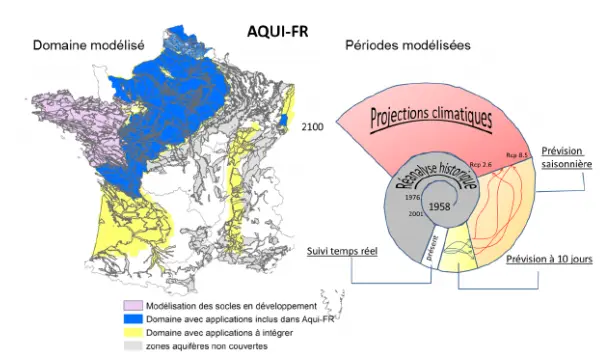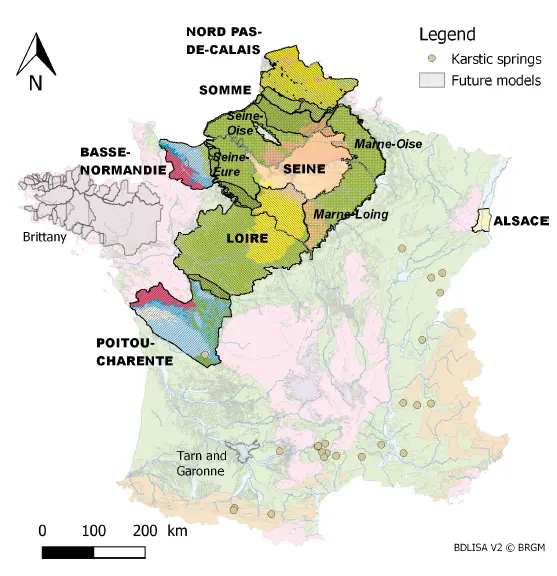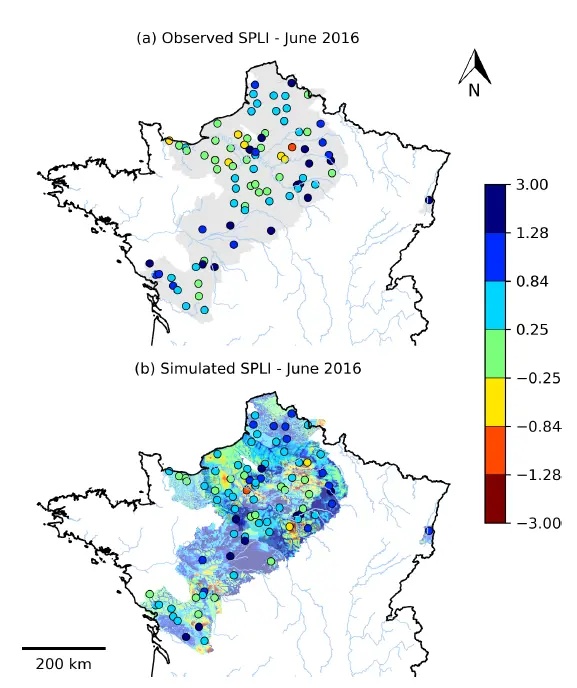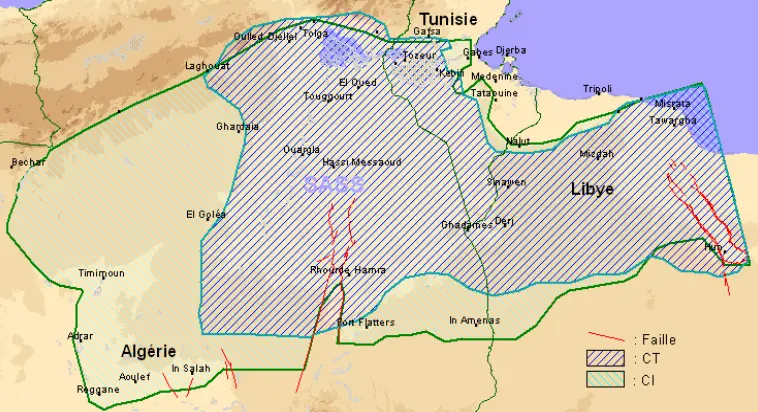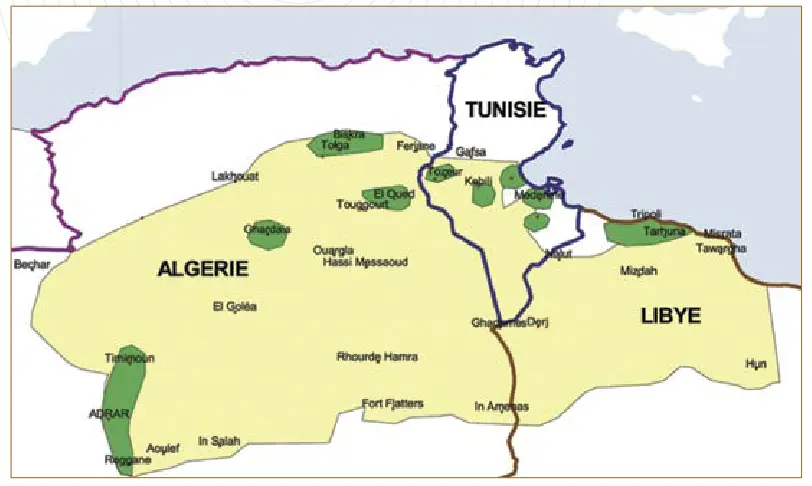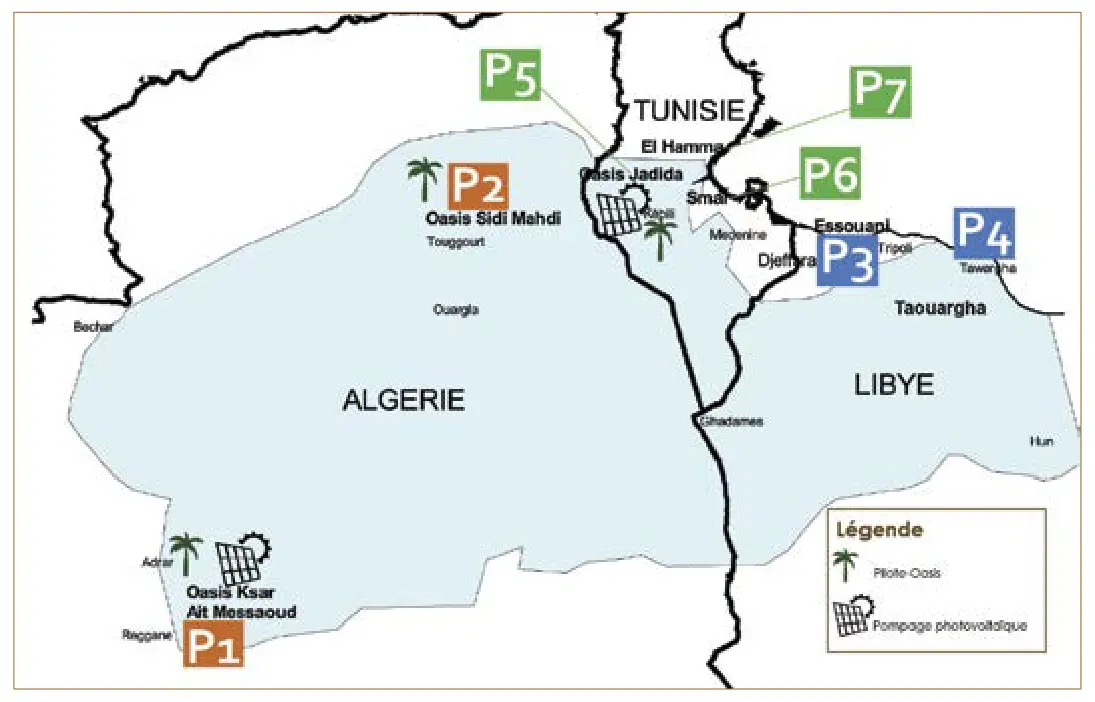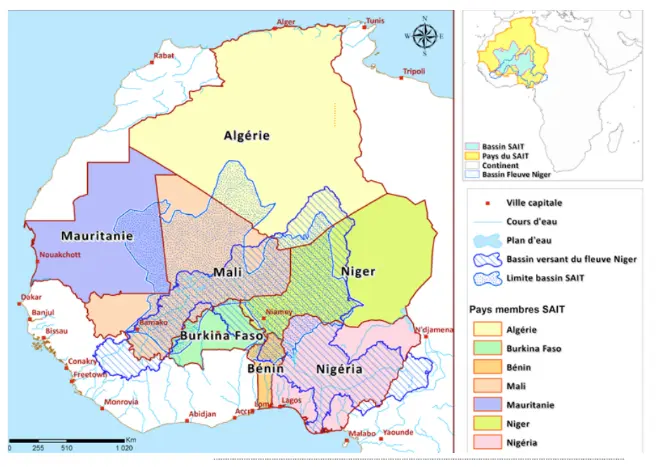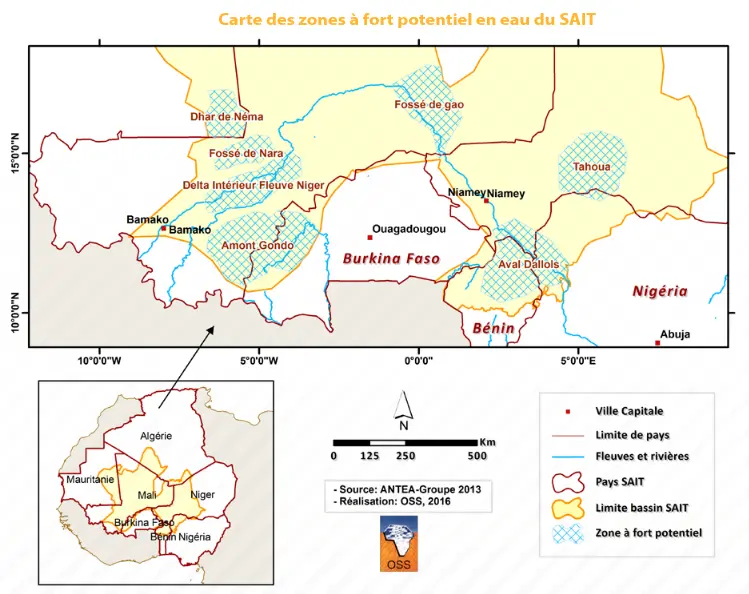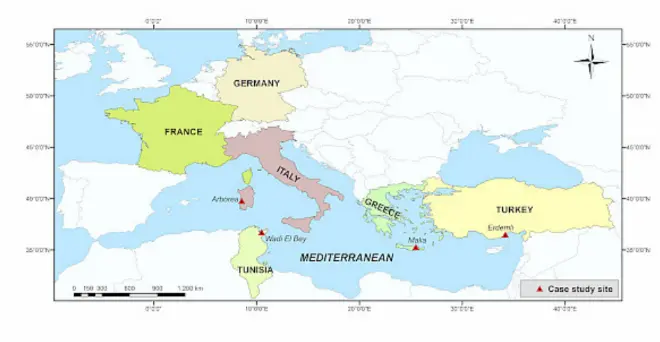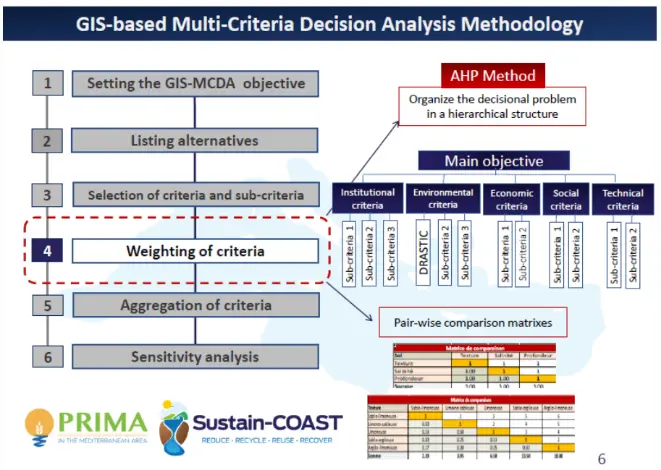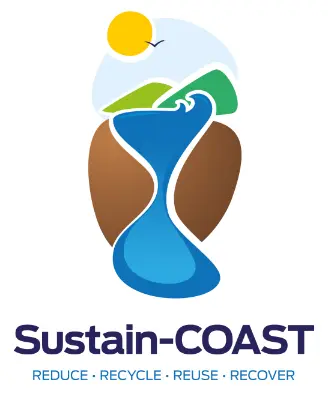The scientific community recommends a substantial improvement in the knowledge of aquifers, the establishment of reliable monitoring networks and a greater involvement of the administration and users to achieve a sustainable management of aquifers. The main objective...
APRONA : an observatory of the Alsace Groundwater (France)
APRONA
An observatory of the Alsace Groundwater (France)
APRONA
Download the practice
People in charge of the innovative practice :
Philippe SCHOTT – contact@aprona.net
Aprona is an observatory of the Alsace groundwater in France. This partnership project brings together all the water stakeholders and has a dual objective of sharing knowledge and assisting decision-making. The approach is also open to the German and Swiss transboundary territories of the Rhine plain, according to the data and information available on certain bordering sectors. APRONA is in charge of the animation, coordination, and development.
Surface water and groundwater are monitored by several organizations on the territory. The waters of these 2 systems are almost in permanent interaction. Through a mutualisation of existing tools, a GIS portal offers an access to water data in Alsace and allows to display indicators and dashboards providing a synthetic vision of the desired information.
The observatory contributes to: (i) cross-referencing, facilitating the exchange of data from the various stakeholders and valorizing them in different forms; (ii) improving knowledge of groundwater and surface water and their interactions to promote a better understanding of the water cycle and aquatic environments; (iii) disseminating information on the situation and issues related to water in Alsace for water professionals, the general public and decision-makers; (iv) providing unbiased content on the quantity and quality of water in Alsace
The users of the platform are mainly engineering companies, local authorities who can benefit from a dedicated access, the general public, the farmers, and finally the private companies such as the gravel pit managers.
Responsible entity
The association for the protection of the groundwater of the Alsace plain (APRONA) is in charge of managing the regional observation networks related to the quantity and quality of groundwater in Alsace and of making information available to the various water stakeholders. APRONA gathers representatives of the Rhine-Meuse Basin Committee, local authorities as well as users, private companies, farmers or nature protection associations. Competent personalities are also associated, in particular a representative of the Ministry of the Environment of Baden-Württemberg (Germany).
Institutional setting
APRONA was created on March 28, 1995 and its founding members are: the French State, the Regional Council of Alsace, the General Council of the Lower Rhine, the General Council of the Upper Rhine, the Rhine-Meuse Water Agency. APRONA is composed of: a board of directors, an office, active members, associate members and honorary members. Active members must be approved by the board of directors and have a deliberative vote at the General Assembly. Associate members participate in the work of the association, but do not have the right to vote. Finally, honorary members can be appointed by the general assembly on the proposal of the executive committee and the board of directors.
Geographical setting
The Rhine water table (water mass CG001 – Pliocene of Haguenau and Alsace water table) is one of the most important underground water reserves in Europe. It extends, in Alsace, on 3200 km² of which 400 for the pliocene of Haguenau. The quantity of water stored, for this part of Alsace alone, is estimated at 35 billion m3. The supply of the water table is ensured:
- directly from precipitation on the plain (effective rainfall);
- by infiltration of the Vosges rivers whose flow is also dependent on precipitation;
- by infiltration of water from the Rhine, depending on the section and the development;
- by lateral contributions at the edge of the Vosges or the Black Forest, by the water tables of the Doller, Thur, Lauch and Fecht rivers in particular.
The water withdrawals from the aquifer are mainly due to:
- exchanges with the rivers and the Rhine which can drain the water table;
- withdrawals by pumping for domestic, industrial or agricultural uses.
The fluctuations of the water level are not without consequences on the natural environment and the human activities: drying up of the wetlands, water rising in the individual houses or the public buildings, incidences on the importance and the propagation of the pollution (appearance of the new vectors of water pollution from the ground or the surface water poorly protected by permeable soils and located at a low depth), the water table is subject to degradation due to multiple pollution, diffuse and/or punctual, of industrial, agricultural, domestic origin or pollution of surface water which infiltrates into the water table.
The Sundgau is the part of the Haut-Rhin department located south of Mulhouse. From a geographical point of view, it is a landscape of gentle hills continuing towards the west with the hills of Belfortain. The region is bordered to the north by the Doller valley and the Alsace plain, and to the east by the Rhine plain, known as the “Sierentz ditch” between Basel and Mulhouse. In the south it stops on the Swiss Jura chains, of which the Ferrette limestone massif represents the first buttress.
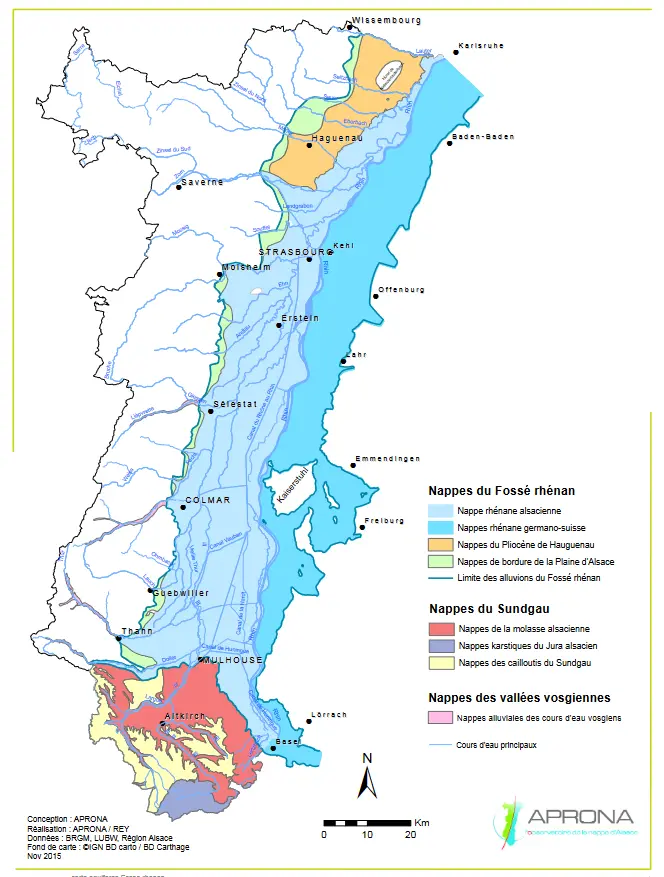
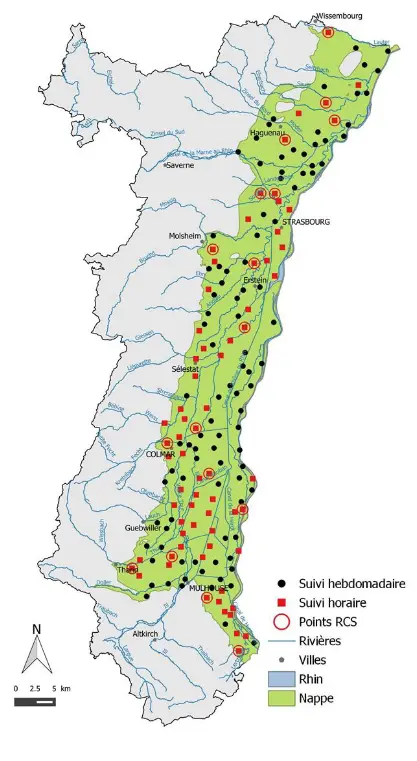
Detailed explanation
Measuring network
APRONA manages a piezometric network of 170 points on the Alsace water table, which can be used to: (i) carry out a global statistical analysis and characterize the functioning of the water table, (ii) carry out hydrodynamic and transfer modelling at the scale of the water table or more locally, (iii) establish reference conditions and analyze the representativeness of the monitoring networks, (iv) defining and monitoring vulnerable sectors within the framework of drought decrees, (v) mapping areas at risk of flooding by rising water table or preferential infiltration, and (vi) evaluating water table-river exchanges and monitoring remarkable wetlands.
Live monitoring
Live monitoring of the water table is possible for 27 reference points of the network. For each station, graphs established with updated data (refreshed every 12 hours) present the evolution of the water table over the last 15 days and over the 12 months and the measurements are automatically put online on the APRONA website. The monthly situations are represented with the help of the standardized piezometric indicator (SPI) which allows to qualify the water table levels in relation to the whole chronicle and the evolution of the levels in relation to the previous months.
State of the the art
The state of the art is frequently published to act in favor of the recovery of the quality of groundwater. These assessments are carried out every 6 years. Through a follow-up of historical pollution and the search for emerging molecules, these assessments help to anticipate, redirect and/or size the actions to be implemented to recover and preserve the quality of the water resource. This work also contributes to the transboundary declination of periodic inventories of the most important aquifer in Europe by associating the German and Swiss partners on their territories concerned.
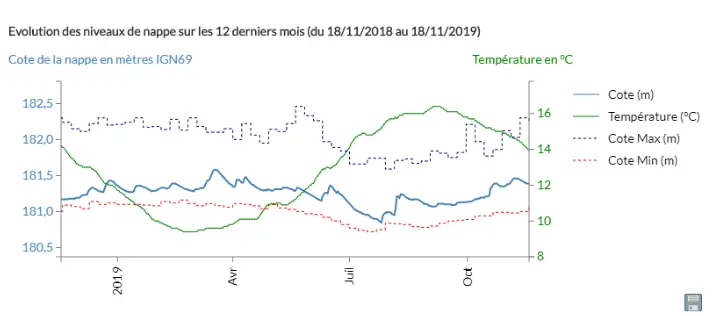
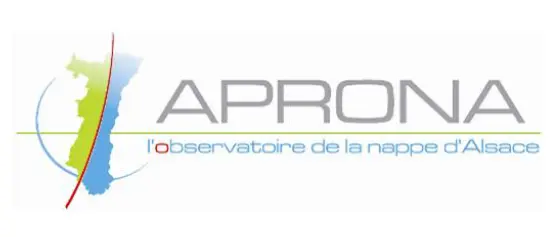
Historical overview
1995: Creation of APRONA (Association for the protection of the groundwater of the Alsace plain) on the initiative of the Alsace Region, the Rhine-Meuse Water Agency, the General Councils and the Alsace Regional Prefecture.
1997: First inventory on a transboundary scale of the quality of the groundwater of the Rhine water table (Project manager: Alsace Region).
1999: Organization of the first APRONA day on nitrate pollution in the Vosges foothills.
2002-2006: Modelling of groundwater pollution by nitrates in the Upper Rhine Valley, setting up of monitoring indicators for actions to protect the Rhine water table in the Upper Rhine Graben, carrying out the 2nd Transboundary Inventory of groundwater quality in the Rhine water table.
2009: Completion of the 3rd Transboundary Groundwater Quality Inventory of the Rhine Groundwater.
2012: Signature of the framework agreement for cross-border cooperation. Setting up of the LOGAR network (Operational Link for the Management of the Rhine Aquifer). Start of the construction of a water observatory.
2015: Launch of the Alsace water observatory.
Evidence of benefits from implementation
Monitoring has shown, for example, that between 2003 and 2010, little change has been observed in the quality of groundwater, with potability limits often exceeded at certain measurement points.
Replication potential in SUDOE region
The Alsace water table is a special case because in France, it is the BRGM that manages the piezometers. Alsace is a particular case which is linked to the historical context.
7 people are dedicated to the daily management of this practice (which can sometimes rise to 13 depending on the nature of the projects underway).
The observatory benefits from subsidies from the Water Agency and the Grand-East Region up to 90%, within the framework of multi-year contracts on the basis of actions proposed by APRONA. The rest is financed by studies and calls for tender.
Future outlook
In the short term, the perspectives set are:
The reform of APRONA’s statutes;
- Technical support for the implementation of territorial solution contracts in priority catchment areas with the objective of supporting local authorities and evaluating trends in concentrations in order to establish a link with the actions undertaken.
- The construction of the new ERMES Alsace/Rhine 2022 project with the objective of assessing the sensitivity of the Rhine water table to the transfer of these micropollutants via watercourses, taking into account the impacts of wastewater treatment plant discharges.
The orientations taken in the long term aim in particular to be coherent with the environmental challenges identified in recent years and more particularly the adaptations to be undertaken in the face of climate change. This will further consolidate APRONA’s status as a reference for stakeholders in the water sector.
It is therefore planned to:
- To perpetuate the provision of decision-making tools and forecasts for public decision-makers, both on the quantity and quality of water resources;
- To extend the expertise in groundwater quality monitoring, knowledge of groundwater recharge conditions and interactions with surface waters;
- To deliver an adapted and independent communication to the public and to reinforce the awareness of the actors for a better shared management of the resource and the recovery of its quality.
Key points of the innovative method
Monitoring and visualization of a piezometric network in real time
> Modeling the functioning of the water table
> Inventory and mapping of pollution
> Governance organized in Observatory
Acknowledgements
The innovative practice was suggested by Yvan KEDAJ (Aqua-Valley), and Philippe SCHOTT (APRONA) participated in the interview.
References
APRONA (2009). Inventaire 2009 de la qualité des eaux souterraines dans le fossé rhénan supérieur. https://www.aprona.net/uploads/pdf/qualite/Inventaire%202009/inv-2009-complet-light.pdf
APRONA (2010). Inventaire 2010 de la qualité des eaux des aquifères du Sundgau. Comparaison avec les résultats des mesures 2003. https://www.aprona.net/uploads/pdf/qualite/Sundgau/region_alsace_rapport_sundgau_2010.pdf
INTERNET REFERENCES:
APRONA : https://www.aprona.net/
aquifer
news
Discover more on the Aquifer project news and on aquifer management
aquifer news
Description and objectives of the project
Information on the project
The Llobregat Delta Water Users' Community has designed recharge basins in Molins de Rei to recharge the Baix Llobregat aquifer. View of one of the reloading basins during the test phase The Llobregat Delta Water Users' Community is one of the nine partners in the...
Success stories in groundwater management
Compilation of groundwater management success stories completed. Throughout April, the 30 cases of innovative practices in groundwater management have already been selected by the clusters participating in the project: PPA, CWP and AV. The task started with the...
PROPOSE AN
INNOVATIVE PRACTICE
You are in charge of an innovative practice regarding aquifer management and you want to referenced it on the Aquifer platform ?
Fulfill the form and propose it to the Aquifer partners.
THE EBOOK
Aquifer offers a range of innovative water management practices. You can download all our fact sheets here.
e-book of innovative practices
DOCUMENTATION
To go further on information related to the management of aquifers
